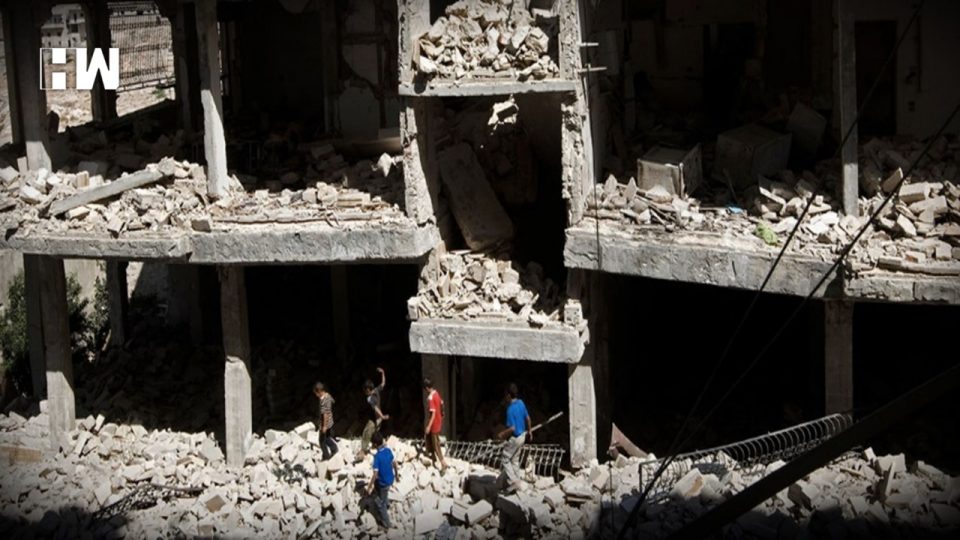The future for Syria’s people is “increasingly bleak”, UN-appointed rights experts said on Tuesday, highlighting escalating conflict in several areas of the war-ravaged country, a return to siege tactics and popular demonstrations linked to the plummeting economy.
According to the UN Commission of Inquiry on Syria, the country is not safe for refugees to return to, after a decade of war.
The panel’s findings come amid an uptick in violence in the northwest, northeast and south of the country, where the Commissioners highlighted the chilling return of besiegement against civilian populations by pro-Government forces.
“The parties to the conflict continue to perpetrate war crimes and crimes against humanity and infringing the basic human rights of Syrians,” said head of the Commission of Inquiry, Paulo Pinheiro. “The war on Syrian civilians continues, and it is difficult for them to find security or safe haven.”
Scandal of Al Hol’s children
Professor Pinheiro also described as “scandalous” the fact that many thousands of non-Syrian children born to former IS fighters continue to be held in detention in dreadful conditions in Syria’s north-east.
“Most foreign children remain deprived of their liberty since their home countries refuse to repatriate them,” he told journalists, on the sidelines of the 48th session of the Human Rights Council in Geneva.
“We have the most ratified convention in the world, the Convention on the Rights of the Child, is completely forgotten. And democratic States that are prepared to abide to this Convention they neglect the obligations of this Convention in what is happening in Al Hol and other camps and prison places.”
Some 40,000 children continue to be held in camps including Al Hol. Nearly half are Iraqi and 7,800 are from nearly 60 other countries who refuse to repatriate them, according to the Commission of Inquiry report, which covers the period from 1 July 2020 to 30 June 2021.
Blockades and bombardment
The rights experts also condemned a siege by pro-Government forces on the town of Dar’a Al-Balad, the birthplace of the uprising in 2011, along with “siege-like tactics” in Quineitra and Rif Damascus governorates.
“Three years after the suffering that the Commission documented in eastern Ghouta, another tragedy has been unfolding before our eyes in Dar’a Al-Balad,” said Commissioner Hanny Megally, in reference to the siege of eastern Ghouta which lasted more than five years – and which the commissioners previously labelled “barbaric and medieval”.
In addition to the dangers posed by heavy artillery shelling, tens of thousands of civilians trapped inside Dar’a Al-Balad had insufficient access to food and health care, forcing many to flee, the Commissioners said.
Living in fear
In the Afrin and Ra’s al-Ayn regions of Aleppo, the Commissioners described how people lived in fear of car bombs “that are frequently detonated in crowded civilian areas”, targeting markets and busy streets.
At least 243 women, men and children have been killed in seven such attacks over the 12-month reporting period, they said, adding that the real toll is likely to be considerably higher.
Indiscriminate shelling has also continued, including on 12 June when munitions struck multiple locations in Afrin city in northwest Syria, killing and injuring many and destroying parts of al-Shifa hospital.
Insecurity in areas under the control of the Syrian Democratic Forces (SDF) in northeast Syria has also deteriorated, according to the Commission of Inquiry, with increased attacks by extremist “remnants” and conflict with Turkish forces.
Division remains
The Commissioners noted that although President Assad controls about 70 per cent of the territory and 40 per cent of the pre-war population, there seems to be “no moves to unite the country or seek reconciliation. On the contrary.”
Despite a welcome drop in the level of violence compared with previous years, the Commission of Inquiry highlighted the dangers that continue to be faced by non-combatants
The senior rights experts also highlighted mounting discontent and protests amongst the population, impacted by fuel shortages and food insecurity, which has increased by 50 per cent in a year, to 12.4 million, citing UNFPA data.
“The hardships that Syrians are facing, particularly in the areas where the Government is back in control, are beginning to show in terms of protests by Syrians who have been loyal to the State,” said Mr. Megally. They are now saying, ‘Ten years of conflict, our lives are getting worse rather than getting better, when do we see an end to this?’”
As an independent media platform, we do not take advertisements from governments and corporate houses. It is you, our readers, who have supported us on our journey to do honest and unbiased journalism. Please contribute, so that we can continue to do the same in future.

